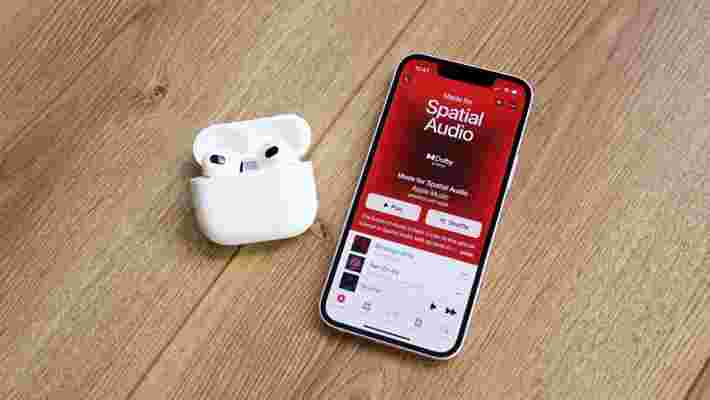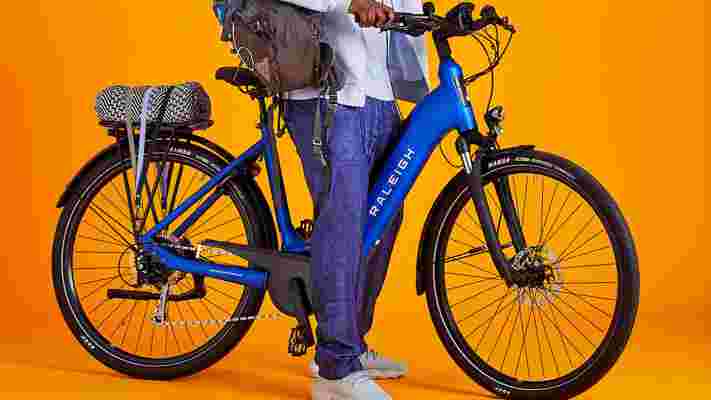Apple’s AirPods line of true wireless earbuds and headphones is among the most popular on the planet – and like all Apple products, these personal audio devices are designed to work seamlessly within the brand’s wider ecosystem.
This means that using AirPods with an iPhone , iPad , or Mac is super simple; but what if you want to use your Apple buds or headphones with your Android phone ? Well, you’ll be pleased to learn that it is possible – but be aware that you may miss out on a few AirPods features, such as support for Spatial Audio and super-fast pairing.
Luckily, there are some workarounds you can take advantage of, including apps that bring back some AirPods functionality that wouldn’t normally be available to Android users.
Whether you’ve recently splashed out on the AirPods Max over-ear headphones, or you’re eyeing up the new Samsung Galaxy S22 and want to keep using your old AirPods, here’s everything you need to know about using AirPods with an Android.
How to connect AirPods to Android phones

If you’re using a pair of AirPods with an Android phone for the first time, you might be wondering how to pair the earbuds or headphones with your device.
AirPods 2019, AirPods 3, and AirPods Pro
First, open your AirPods’ charging case and then open the Bluetooth settings on your Android phone by going to Settings > Connected Devices > Bluetooth. Make sure Bluetooth is switched on.
Now hold down the pairing button on the back of your AirPods’ case – the LED on the front of the case should flash white.
Look for your AirPods in the list of Bluetooth accessories and tap ‘Pair’. Your AirPods should now be connected to your Android phone.
AirPods Max
The process for pairing the AirPods Max is exactly the same as it is for the true wireless AirPods, except you’ll need to hold down the noise control button on the headphones, rather than the pairing button on the other AirPods charging cases.
This button can be found on the top of the right earcup, on the opposite side of the headband to the Digital Crown . The status light at the bottom of the earcup should flash white, and once the AirPods Max appear in the Bluetooth devices list on your Android device, press ‘Pair’
Which AirPods features don’t work on Android?

The Apple AirPods line boasts excellent connectivity, great integration with the Apple ecosystem, and a simple user experience, making them a popular choice for anyone who wants to listen to music on the go. And, while the AirPods (2019) aren’t the best-sounding earbuds on the planet, Apple has taken great strides in terms of audio performance with the AirPods Pro , AirPods 3 and AirPods Max.
Unfortunately, some of the most positive AirPods features aren’t supported natively on Android devices, which puts non-iPhone users in a tricky position when it comes to choosing their next wireless headphones or earbuds.
Simple setup Pairing AirPods with an iOS device is as easy as opening the case near your device – or, for the AirPods Max, taking them out of their Smart Case and holding them close to the iOS device. A setup animation will then appear on your screen, with the AirPods automatically connecting. Pairing AirPods with a Mac requires you to head into your System Settings and select the AirPods manually.
There’s no workaround to make pairing any faster on Android devices – but, luckily, the process is very quick anyway.
Siri
Android devices don’t come with Apple’s voice assistant, so don’t expect to be able to summon Siri with your voice while wearing a pair of AirPods. However, there is an app called Assistant Trigger that you can download for free, which lets you squeeze the stem on your AirPods to summon Google Assistant.
Checking the battery
When you pair your AirPods with an iPhone, you’ll see an animation that displays the battery status of your earbuds or headphones. While this doesn’t happen on Android, the Assistant Trigger app mentioned earlier can also show you how much playback time is remaining.
Automatic Switching
You can switch AirPods between different iOS devices automatically – so if you’re listening on your iPhone, all you have to do is start playing music on iPad to swap to your tablet.
Customizing the controls
On an iOS device, you can change the function of a double-tap on the touch-sensitive housings of the AirPods – for instance, you could set it up to skip your music to the next track. This isn’t possible on Android devices.
Automatic pausing Your AirPods will automatically stop playing music on removing the buds from your ears. While this doesn’t usually work with Android devices, the Assistant Trigger app does make this possible. However, the app’s website does state that this feature doesn’t work with the Motorola Moto G5 Plus, Xiaomi Mi A1, or Redmi Note 5.
Listening with one earbud While you can listen to music or podcasts with a single AirPod when using an iOS device, you need to have both AirPods out of the case to use them with an Android.
Spatial Audio
The Spatial Audio feature available with the AirPods 3, AirPods Pro, and AirPods Max is limited to iOS devices, so you won’t be able to hear music in virtual surround sound if you’re using an Android phone.
Find My The AirPods are integrated into Apple’s Find My network, so you can easily recover the buds if you misplace them. There’s no such feature available on Android devices.
Conversation Boost The AirPods Pro can help you hear face-to-face conversations by boosting the volume using computational audio and beamforming microphones. Android users aren’t able to use this feature, since you need the latest version of iOS or iPadOS for it to work.
Will the AirPods Pro 2 work with Android?

Like the current models in the AirPods line, we think Apple will keep some of the best features of the rumored AirPods Pro 2 exclusive to iOS users. Recent updates to the range – such as Automatic Switching – have included lots of extra connectivity within the Apple ecosystem, so it appears that Apple wants to ensure its products are used together.
That interconnectivity isn’t limited to AirPods. For example, a new Handoff feature lets you push music playing on your iPhone to your HomePod mini by simply holding your smartphone close to the smart speaker .
But Apple has recently shown more willingness to allow non-iPhone users to access the best features of its audio devices via its subsidiary Beats. The Beats Fit Pro don’t feature Apple’s H1 headphone chip, coming with USB-C charging (AirPods use Apple’s Lightning port), one-touch pairing, and a Google Play Store app. However, Android users still don’t get access to their always-listening voice assistant or Spatial Audio – so there are limitations if you’re not using an iPhone.
What are the best AirPods alternatives for Android users?
If this has put you off using AirPods with your Android device, don’t worry: there are lots of fantastic wireless headphones and earbuds that work just as well with Android as they do with iOS. We’ve rounded up a few of our favorite examples below:
Sony is largely responsible for the rude health of the active noise-cancelling true wireless earbuds market, and with the WF-1000XM4, the company has combined performance, ergonomics, and build quality more effectively than ever before.
Compared to the AirPods Pro, the Sony earbuds offer enough quality-of-life features to make them worth considering, even if you do have an iPhone - not least due to their cheaper price and superior sound quality.
While other true wireless earbuds surpass the Sony WF-1000XM4 in particular areas – noise cancellation, for example – no other model comes close to offering such excellent quality across the board. That’s why the Sony WF-1000XM4 are hands-down the best true wireless earbuds you can buy today.
Read more: Sony WF-1000XM4 review
The Sony WH-1000XM4 are the best wireless headphones you can buy, thanks to their excellent noise-cancellation, supreme sound quality, and lightweight wireless design.
While they don't look significantly different from their predecessors, the Sony WH-1000XM3 , a number of new features including multipoint pairing, DSEE Extreme upscaling, conversational awareness and auto-play/pause using a built-in sensor all help the WH-1000XM4 claim the title of best headphones overall in 2022.
By every possible metric, the Sony WH-1000XM4 are a wonderful pair of wireless noise-cancelling headphones. They deliver exactly what they promise and then some thanks to their exceptional noise cancellation and cutting-edge codec support.
On top of the adjustments listed above, the Sony WH-1000XM4 support Sony’s 360 Reality Audio format that enables spatial audio on stereo headphones - just like the AirPods Max, but for nearly half the price.
Read more: Sony WH-1000XM4 Wireless Headphones review
These true wireless buds from Samsung are a big step up from the Samsung Galaxy Buds Live , offering better sound and microphone quality with multipoint pairing and spatial audio support.
While there's a new model on the scene – the Galaxy Buds 2 – the Buds Pro are still well worth buying.
It's worth nothing that they don’t offer the same level of noise cancellation as over-ear headphones or the sound quality of some of the other high-end earbuds on this list, but for their price they offer just enough of both to be competitive and deserving of a place on our best wireless earbuds list. Plus, they come with support for spatial audio, like the AirPods 3, AirPods Pro, and AirPods Max.
The Galaxy Buds Pro are specially built to cater to people who already have a Samsung phone. That’s because they offer multipoint pairing, hands-free Bixby support (but not Google Assistant) and the Samsung Galaxy Wearable app – this is only available on Android that you’ll need to use to unlock the Buds’ best features.
Read more: Samsung Galaxy Buds Pro review
When we first reviewed the original Lypertek PurePlay Z3 true wireless earbuds (then known as the Lypertek Tevi), we were blown away. The Lypertek PurePlay Z3 2.0 true wireless earbuds are their successors.
They’re very similar to the originals, with a few key improvements, and yet still come in at the same affordable price point the originals did – $99 / £99.
This gets you everything we loved about the original PurePlay Z3 including a detailed, well balanced sound, and a whopping 80-hour total battery life from its petite USB-C charging case. New features include wireless charging, a powerful new LDX Audio mode, improved app functionality and a hear-through ambient mode.
Our own issue is that app connectivity is patchy at best, and the ambient hear-through mode is pretty much useless in comparison to the AirPods Pro.
Yet, with the price still so low, and nothing to detract from the quality standard the originals set out, they remain must-have earbuds, more than a match for the AirPods (2019).
Read more: Lypertek PurePlay Z3 2.0 review
Think of the Beats Fit Pro as the Apple AirPods Pro with a few modifications and at a lower price. They have a robust feature set that includes active noise cancellation, spatial audio support and hands-free Siri on iOS, as well as a prominent wing tip, which helps to hold them in your ears when you’re working out.
They have slightly better battery life and a smaller carrying case than the older Powerbeats Pro and deliver better results than the similar-looking Beats Studio Buds , which makes them well worth an upgrade.
But there are a few niggling issues. Noise cancellation is akin to the AirPods Pro, but they’re not quite as powerful as other earbuds from Bose and Sony. And although the wing tips hold them in place, during our testing we found they also add extra pressure to the outer ears. It's also worth mentioning that Android users won’t quite get the full experience (i spatial audio and hands-free voice assistance) that iOS users get.
But although they're not perfect, these are a snug-fitting, workout-friendly alternative to Apple’s flagship true wireless earbuds.
Read more: Beats Fit Pro review
Book of Boba Fett post-credits scene explained
The Book of Boba Fett's seven-episode run has ended – but the TV show's ending has teased a somewhat exciting future for the Star Wars franchise.
Episode seven, aka In The Name of Honor, brings the curtain down on the bounty hunter's inaugural standalone Disney Plus series in fitting fashion. But while it's unclear what the future holds for Boba Fett himself, the latest Star Wars show does offer a glimpse into the franchise's future outside of The Mandalorian and other upcoming Star Wars TV series.
How does The Book of Boba Fett do that? In the now traditional format of a post-credits stinger. Below, we explain what the Book of Boba Fett's post-credits scene reveals and what it could set up in the Star Wars universe. Major spoilers follow for The Book of Boba Fett's season finale , so turn back now if you're not caught up.
Book of Boba Fett post-credits scene explained: who's in the bacta tank?

The post-credits scene is very brief, lasting for no longer than 10 seconds. However, it provides a tantalizing glimpse into another potential Star Wars spin-off series.
To explain it, we need to back up a little bit. During episode seven's closing sequence, Boba Fett and Fennec Shand are walking the streets of Mos Espa after their victory over the Pyke Syndicate. The townsfolk bow at Boba Fett for saving them from the Pykes' totalitarian rule, and Boba bows back out of respect. Each time he does, though, he grimaces due to the injuries he suffered in the show's climactic battle.
Fennec asks him why he hasn't recovered using the bacta tank in his palace, to which Boba replies: "It's being used". Immediately, it seems that Black Krrsantan is the individual using the tank to heal their wounds, but we see the Wookiee bounty hunter-turned-bodyguard in the episode's penultimate scene alongside Boba, Fennec and the Mods.
So who is in the bacta tank? The post-credits stinger reveals all. Once the credits have rolled, we're transported to Boba's palace and, more specifically, into the room with the bacta tank – and there's someone in it that we, initially, don't recognize.
As the camera moves closer, however, it's clear to see who it is: it's Cobb Vanth, who was shot by Cad Bane at the end of episode 6:

The camera pans up to reveal a figure, with their back to the audience, standing over the tank. They turn round to reveal their identity, and it's none other than the Mod Artist. This character saved Fennec's life – when Boba brought her to him in episode four – by modifying her body with cybernetic parts. Now, it seems like the Mod Artist is going to do the same to Cobb.
Book of Boba Fett post-credits scene explained: what does this mean for the Star Wars franchise?

For starters, Cobb Vanth will return as a cybernetically enhanced human. That much is clear, given what's teased in the post-credits scene.
But his survival also hints at where Boba Fett and Fennec Shand's future in the Star Wars universe lies – and it doesn't seem like it'll be on Tatooine.
Again, episode seven's second-to-last scene heavily teases this. Boba's "I don't think we're cut out for this" line, with regards to being the Daimo of Mos Espa, suggests that he plans to give up the mantle of being the city's protector.
Who better, than, to assume that role than Cobb once he's fully healed? As the protector of Freetown, and the individual who single-handedly held off the Pyke Syndicate's spice operations in Tattooine's vast desert regions, he seems like a perfect fit to be Mos Espa's new law enforcer.
If Cobb takes up Boba's offer to replace him as Daimo, it frees up Boba Fett and Fennech Shand to head off into the galaxy for a new adventure. The bounty hunter's TV show has mined all it can for his story on Tattooine, so a fresh start is needed to keep both characters relevant in the Star Wars universe.
So The Book of Boba Fett's post-credits scene is a pretty important one, all things considered. Cobb Vanth's return would allow Lucasfilm and Disney to potentially pursue another spin-off series, which focuses on Cobb as he tries to keep the streets of Mos Espa as clean as possible. And, with Boba and Fennec free to explore the galaxy, a second season of The Book of Boba Fett – or even cameo appearances in the likes of The Mandalorian season 3 – could be on the cards.
Jon Favreau and Dave Filoni have proven that they're able to tell interesting and, more importantly, new stories in the Star Wars franchise using the TV medium. If the pair decided to make The Book of Boba Fett season 2 or a Cobb Vanth-centred spin-off, then most Star Wars fans would likely be happy to see both on the small screen. Especially as the Star Wars TV universe is becoming increasingly interconnected.
While we wait for confirmation on either of those fronts, the Star Wars TV universe is still pretty packed. An Obi-Wan Kenobi TV show is rumored to arrive in May 2022 , while The Bad Batch season 2 and Rogue One prequel show – Andor – are also set for release this year.
Add in a standalone series for Ahsoka Tano , a Sith-centric show called The Acolyte, and the aforementioned Mandalorian season 3, and there's plenty to look forward to in the franchise.
Raleigh’s latest e-bikes offer 100-mile range for surprisingly little cash
Raleigh has revamped its entire Motus e-bike range for 2022, with new designs, improved range, and surprisingly modest price tags.
There are five bikes in the new lineup, all with prices towards the lower end of the scale for e-bikes, with a range of frame styles to suit different riders:
The bikes have a range of between 80 and 100 miles with pedal assistance, which is very impressive for the price. To put that into context, most similarly priced models in our roundup of the best electric bikes can only keep rolling for between 40 and 60 miles with the motor engaged and pedals turning.
Each model is equipped with a near-silent 400WH Bosch Active Line motor built into the downtube – a system also used by brands including Cannondale, Canyon, Kona, and Trek. The motor has has four power assistance modes that can be adjusted using a Purion on-board computer mounted on the handlebar within thumb's reach. This also lets you check stats including your speed, battery life, and remaining range at a glance.
Quick and quiet
The Motus Tour and Grand Tour models are powered by a Bosch Powertube battery weighing a modest 2.9kg. This can be detached for easy charging, unlike the built-in batteries used in some lightweight e-bikes that mean the entire frame has to be plugged into an outlet.

To make life easy for commuters and general city riding, each bike also comes fitted with fenders, reflective tires, a kickstand, hydraulic brakes (essential for a bike with a powerful motor) and seven-speed gear system.
We'll be testing one of the new Motus bikes very soon, and will bring you a full review once we've put it through its paces.
Opinion: analysis
Not only are there five different bikes in the new Motus lineup, they're also available in a wide range of sizes. That's great news for accessibility.
Until recently, many electric bikes (such as 2020's Cowboy 3 ) were only available in a single frame style and size, typically optimized for a man of roughly average height. That severely limited accessibility to some of the people who stand to benefit most from battery assisted pedalling, including those with mobility issues who'd find a step-over frame hard to use.
It also ruled out most women – the average height for a man in the US is 5'9", while the average woman is 5'3.5", which makes a huge difference when it comes to bike frames. There's no one size that fits all.
E-bike builders are starting to make progress on this front (the Cowboy 4 is available with either a step-over or step-through frame, as are many new fat tire e-bikes ), but it's refreshing to see that Raleigh has taken things even further. The refreshed Motus line is specifically designed with different ages and abilities in mind, with low-step, crossbar, and open frame models in sizes from 44cm to 50cm, so everyone can benefit from the convenience of power assistance.